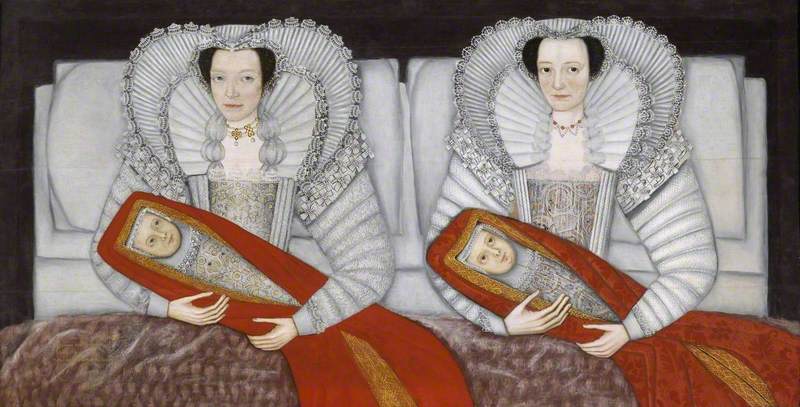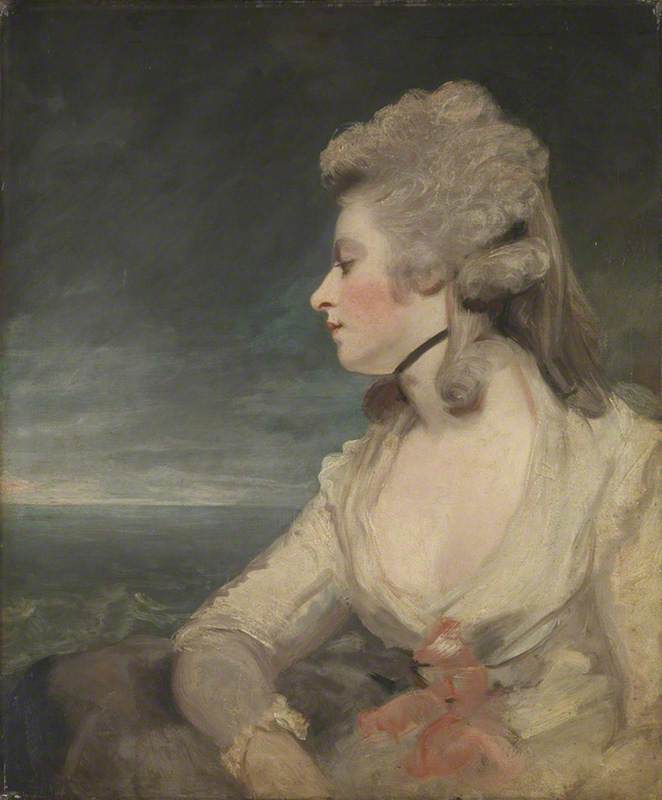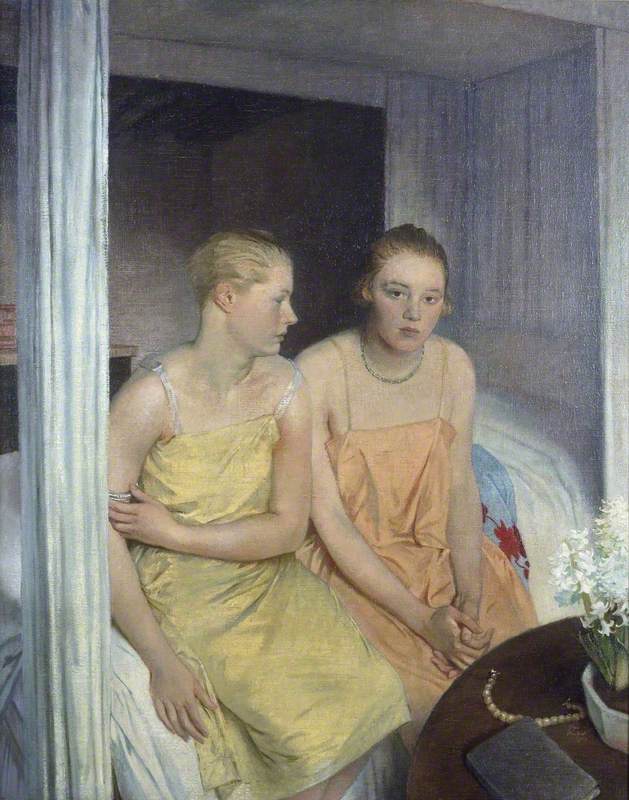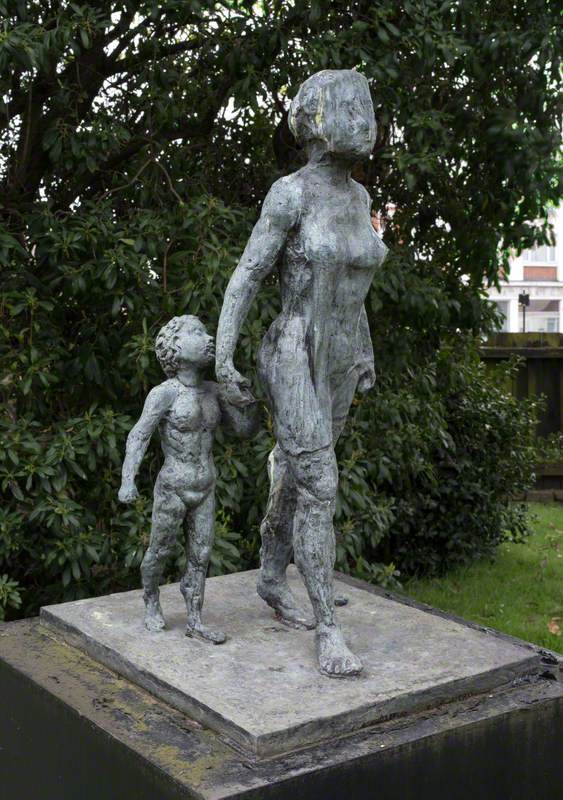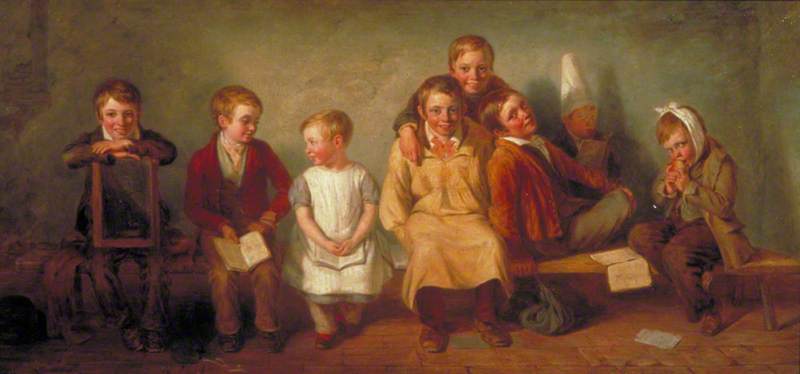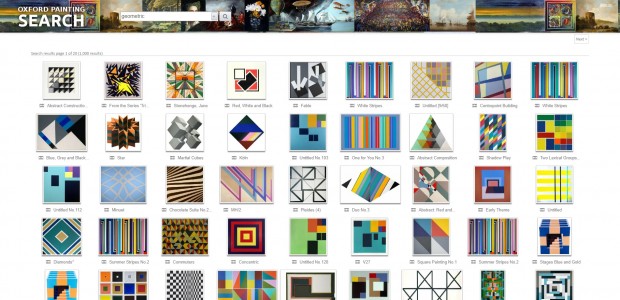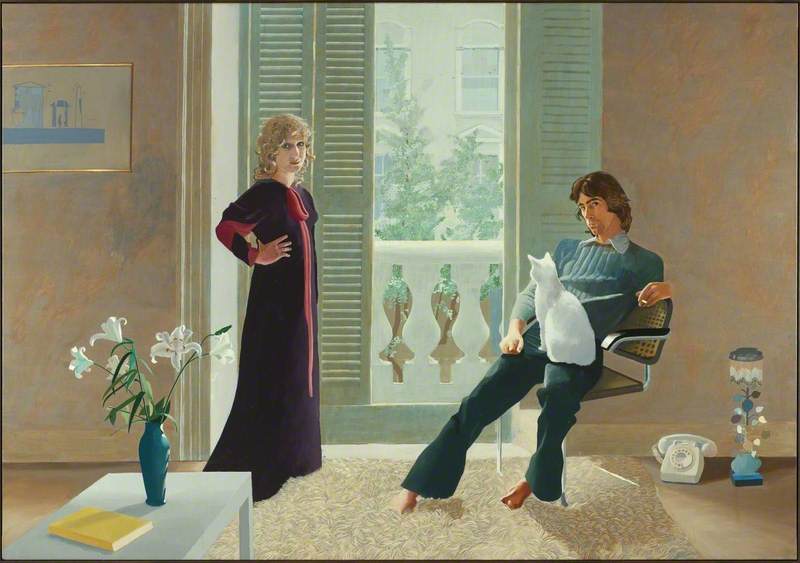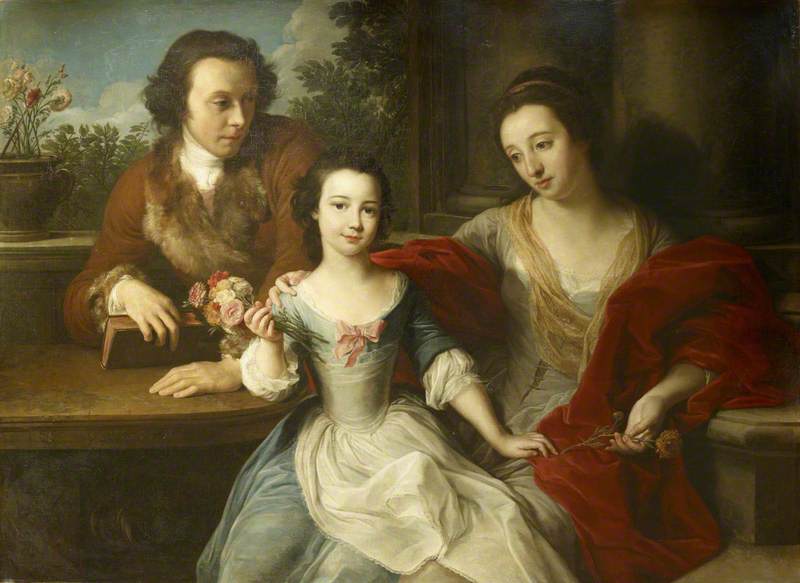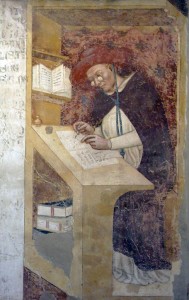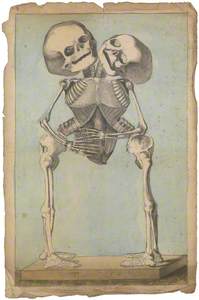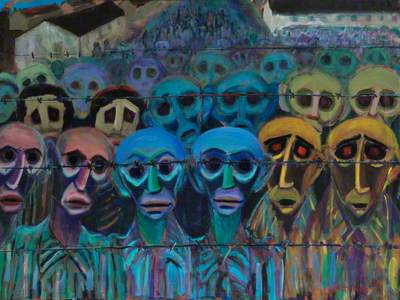As a twin myself, I know what it is like to be compared to another person who happens to look very similar to me. For centuries, artists and the public at large have also found twins to be fascinating.
An unusual and intriguing subject to paint, twins provided artists with the challenge of capturing uncanny symmetry, sameness, yet also nuanced difference.
Historically, due to the high risk of mortality during childbirth, twins were a rarity. Once a glorified subject in ancient mythology, in the following centuries they were treated with a range of different responses, from curiosity to suspicion, sometimes even hostility.
Portrait of an Unknown Lady with a Child
Marcus Gheeraerts the younger (1561/1562–1635/1636) (follower of) 
In medieval and early modern Europe, twins and conjoined twins were believed to be 'monstrous' children, often regarded as signs of God's wrath, or even the work of Satan. Today, twins account for around 3% of births and representations of them have become increasingly prevalent in contemporary popular culture. From Stanley Kubrick's creepy twins in The Shining to Princess Leia and Luke Skywalker in the Star Wars saga, twins can now be found everywhere.
To examine this peculiar history, here are some artistic portrayals of twins throughout the ages.
Ancient mythology
Twins appear as a subject across ancient western and eastern mythologies. You might not have known that the Greek god Heracles (known as Hercules in Roman myth) had a mortal twin brother called Iphicles...
Often representing two halves of the same whole, twins symbolised the dualistic nature of the universe – the opposing spirits of good and evil – or signified godlike virility of the father. In general, many cultures since the time of antiquity have believed that twins have special powers.
Lava and Kusha
Lava and Kusha were the twins of the Hindu deities Rama and Sita. They feature in the ancient Hindu epic the Ramayana, written in Sanskrit between the seventh to fourth centuries BC. According to myth, Sita had been forced to prove her purity after her abduction by Ravana and subsequent rescue by Rama. Banished to the forest where she gave birth to the boy twins, she left her newborn children in the hands of the poet Valmiki.
When Sita decided to run away with only one twin – Kusha – she left Lava with Valmiki. To replace the lost child, Valmiki created a similar-looking holy child, until one day (in a dramatic narrative twist) all three boys eventually end up in the care of mother Sita.
To test which of two of the three boys were really his biological sons, Rama ordered that they all cross a fire to reach him. Alas, Valmiki’s son was scathed by the burning flames. In this Kalighat painting (meaning it is from the school of painting in Kalighat, Kolkata), Rama, not recognising his twin sons, fights them after they capture his horse.
Apollo and Artemis
In ancient Greek mythology, Apollo and Artemis were twins born to the god Zeus and Leto, the beautiful daughter of the Titans Coeus and Phoebe. Hera, the jealous wife of Zeus, forbade anyone on land to give Leto shelter when in labour. Eventually, Leto found refuge on a small Grecian island (now known as Kos) to give birth.
According to myth, the twins remained very close. Representing the dualistic nature of the universe, the twins governed opposites. Whereas Artemis became the goddess of the moon, Apollo became the god of the sun.
Castor and Pollux
In Greek and Roman mythology, the twin half-brothers Castor and Pollux were also known by the shared name the 'Dioscuri'. The sons of Leda, Castor was the mortal son of the King of Sparta and Pollux was the divine son of Zeus.
Castor and Pollux, the Heavenly Twins
1783
Giovanni Battista Cipriani (1727–1785) 
When Castor was killed, his twin brother Pollux asked Zeus to let him share his immortality so that they could stay together. In response, Zeus turned them into the constellation Gemini.
Romulus and Remus
The most famous twins in ancient Roman myth, Romulus and Remus were twin brothers who founded the city of Rome. The twins often appear being suckled by a she-wolf who raised them, known as the Capitoline Wolf.
Romulus and Remus with the River God Tiber
17th C
Italian (Roman) School 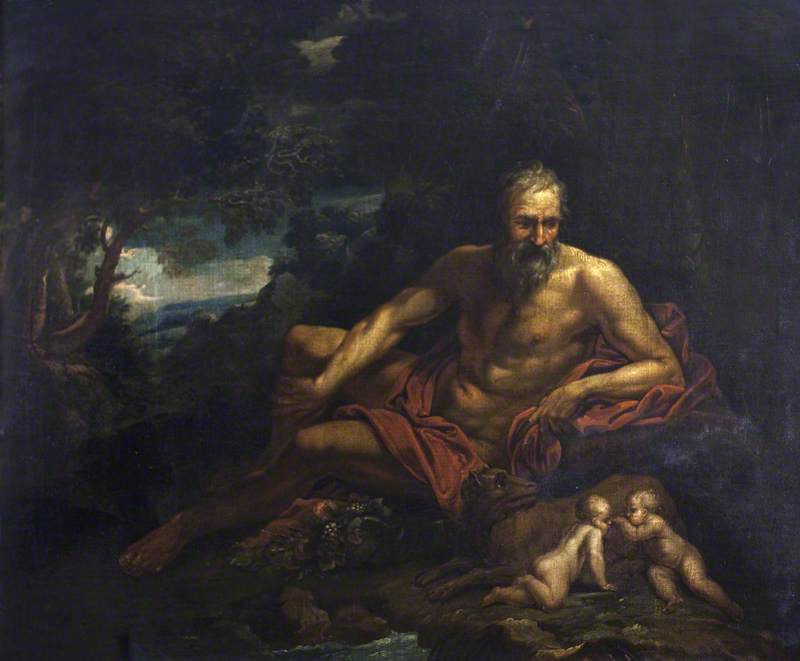
But not all twins can stop their quarrelling. After a long fraternal dispute about whose plans should be used to build Rome, Romulus decided to kill his brother. Hence Rome is called Rome, and not Reme...
Medieval and early modern Europe
The prevalence of cultural representations of twins declined in the medieval period. A double birth was treated with suspicion, with the mother often accused of adultery or even witchcraft. Twinship was viewed as a 'disruptive event' and an alarming taboo.
An Exhausted Woman Being Held by Friends after Just Giving Birth to Twins
Parmigianino (1503–1540) (after) 
Whereas in ancient culture, many twin deities existed and were assumed to be a result of the strength of the male seed, in medieval times women were blamed for the 'unfortunate' outcome of twins.
In the late twelfth century, Marie de France's lai (story) Le Fresne further cemented the belief that twins born by the same woman had different fathers. Thus twins represented an adulterous or sinful act.
Mary, Queen of Scots (1542–1587)
1610–1620
Rowland Lockey (c.1565–1616) (after) 
Mary Queen of Scots, also known as Mary Stuart, conceived twins during her third marriage, though they were stillborn. This unfortunate event was one among many that marked her tragic life, which you can read more about in our story all about her portrayal in art and literature.
Shakespeare
In the sixteenth century, Shakespeare wrote two plays featuring twin characters. The first was The Comedy of Errors and the second was Twelfth Night. A farcical comedy about mistaken identity, The Comedy of Errors tells the story of identical twins separated at birth.
In this painting from Act I, Scene 1, the character of Emilia is rescued from a shipwreck with her twin sons.
The nineteenth century
A scientific obsession with twins and conjoined twins developed in the nineteenth century, when new studies attempted to untangle the influence of genes.
Chang and Eng Bunker, the famous Siamese (modern-day Thailand) conjoined twins born in 1811 were propelled to fame and coined the 'Siamese twins'.
Chang and Eng, the Siamese Twins, in 1830
1830 or after
Irvine (active 1830s) 
Treated as 'freaks' and curiosities, they toured the world and became the most studied human beings of the nineteenth century. Astonishingly, the twins collectively fathered 21 children.
No one explored twins in the nineteenth century more than the eminent scientist Francis Galton, who happened to be the cousin of Charles Darwin. Galton published the paper 'The History of Twins' in 1875, which explained his use of twins to distinguish between nature versus nurture.
The fascination with twins also underpinned new revelations about personality and individual psyche in the late nineteenth century, which would foreshadow groundbreaking studies about psychoanalysis and psychology in the twentieth century.
Here, John Everett Millais demonstrated his artistic flair by capturing the sameness and slight differences between two female twins, called Kate and Grace Hoare.
While Kate on the left appears self-possessing and confident, her sister standing to the right appears to be more timid and demure.
The twentieth century and beyond
Controversially, Galton had laid the foundations for the pseudoscientific field of eugenics, which was later exploited by the Nazis to claim that the 'Aryan' race was superior during the Holocaust.
The Nazi doctor Josef Mengele performed deadly human experiments on prisoners of war and was particularly interested in identical twins, especially twins with different eye colours.
The Twins (Winifred and Leonora Reid, b.1911)
1920
Thomas Bowman Garvie (1859–1944) 
Statistics show that the number of twins has increased drastically since the 1980s. In a study completed in 2014, it was estimated that one out of every 30 babies born is a twin, meaning that today twins are no longer regarded as 'abnormal', but rather a normal part of modern society. In fact, with the advent of many Hollywood celebrities having twins (and, of course, Beyoncé), to have twins has even become fashionable.
To conclude this brief history on the cultural prevalence of twins, let's finish with the twins from Stanley Kubrick's The Shining.
N.B. This film is really scary.
Lydia Figes, Content Creator at Art UK
